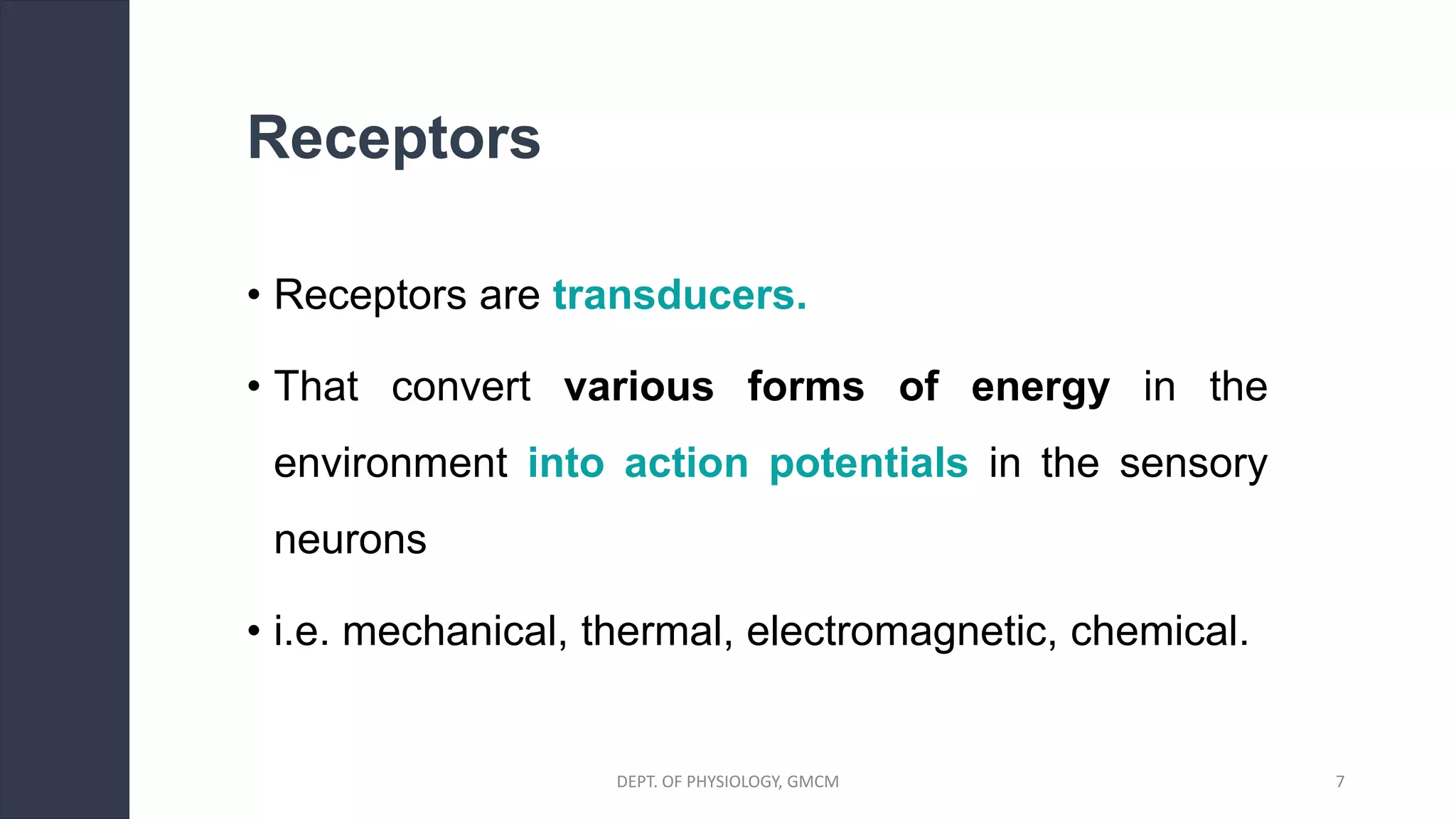This document discusses sensory receptors and their classification. It begins by introducing the role of receptors in transmitting sensory information to the central nervous system. Receptors are then classified based on their modality (mechanoreceptors, thermoreceptors, nociceptors, etc.), location (exteroceptors, proprioceptors, interoceptors), and the type of stimulus detected. The document focuses on cutaneous receptors, describing the structure and function of various mechanoreceptors, nociceptors, and thermoreceptors in the skin. It provides detailed information on the receptor types involved in touch, pain, cold, and warmth sensations.



































































































































